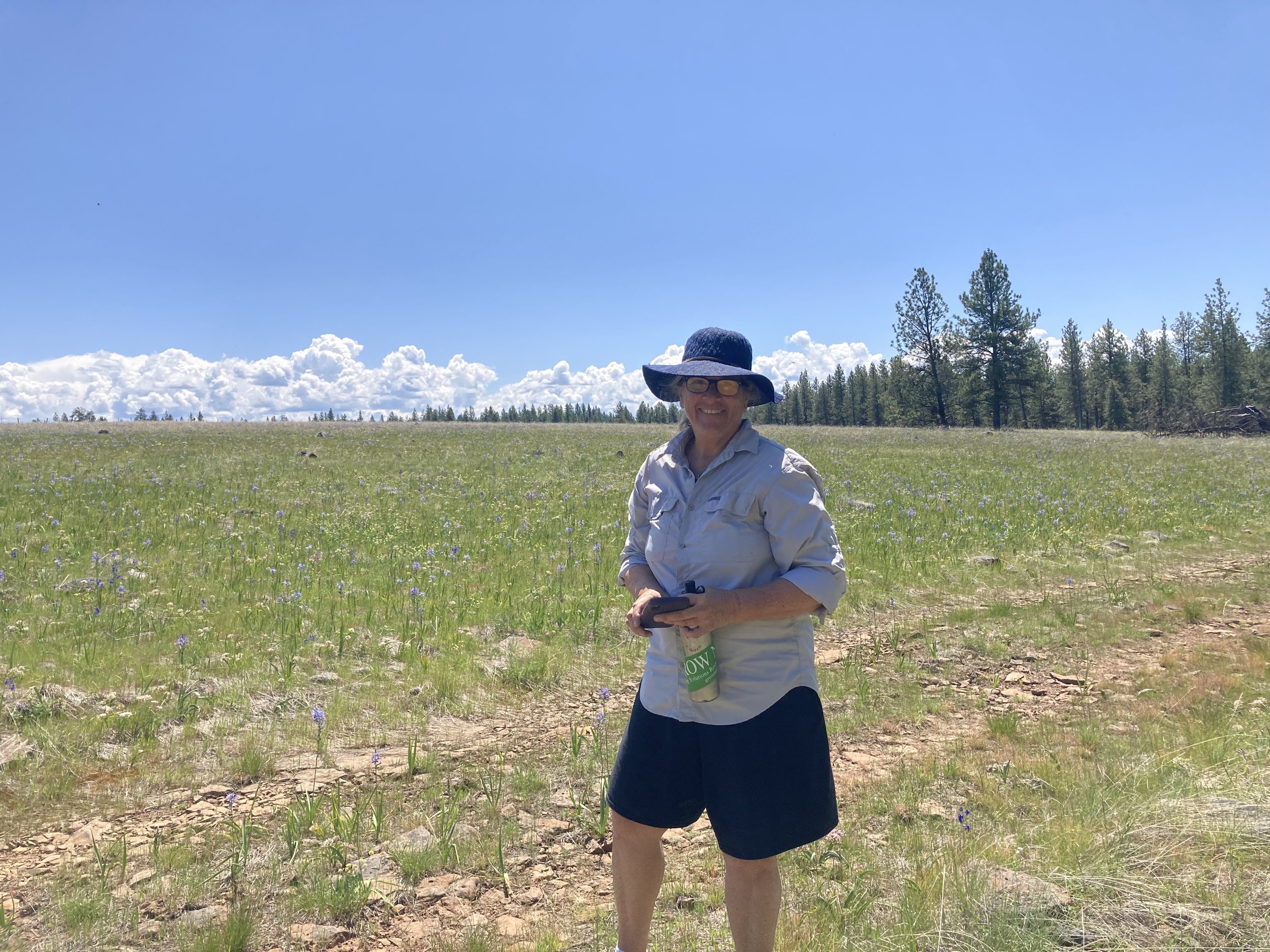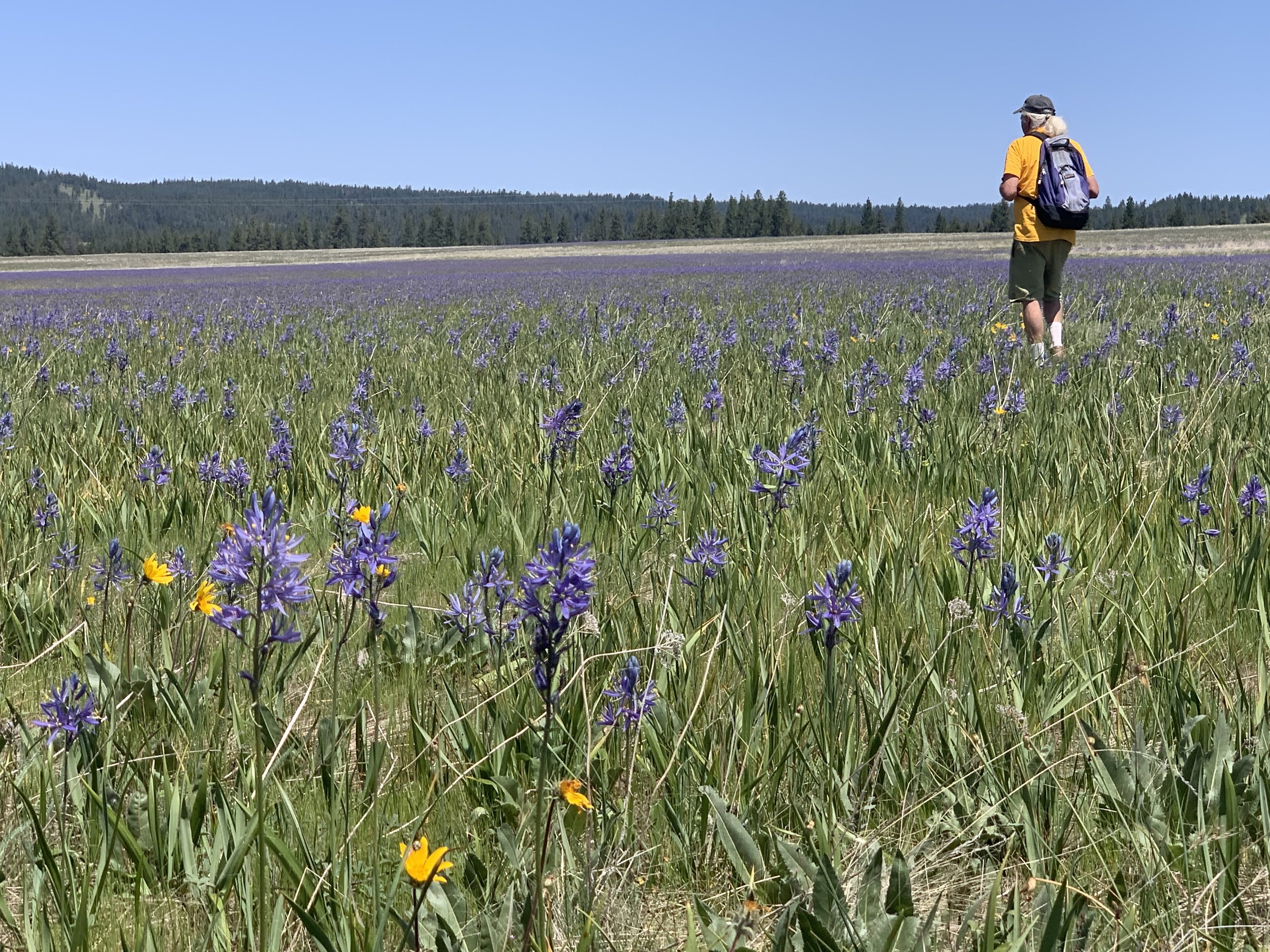Here’s a fun fact: Native perennial grasslands sequester more carbon than trees. This increased carbon sequestration happens due to their extensive root systems. Unlike trees, most of the native grass biomass is found below ground. And overall, native grasslands store more carbon than those dominated by non-natives.
In Oregon we are restoring 600 acres of grasslands that has been overgrazed for 150 years. A decade ago we took the first step by writing a management plan and rested all pastures for two years. Thanks to Natural Resource Conservation we have a funded plan. Our actions include reducing the number of cows and rotating them more often. We do not put the cows on until late in the season when all the grasses and forbs (small herbaceous plants) have gone to seed. We rotate the cows as soon as the grass gets four inches above the ground. We rest one or two of the six pastures every year. In addition, we are eradicating annual weeds and reseeding with native grasses and forbs.
The grasslands have a complex plant pallet composed of perennial and annual grasses with an abundance of flowering forbs. Camas (Camassia quamash) is a high-priority plant as it is a first food for the tribes in our area. It has a striking blue flower creating a lovely swatch when flowering over a healthy meadow. Camas is harvested with a digging strip, poking the stick in the ground and popping out a bulb. The bulbs are sweet when roasted, high in protein and calories. As Camas is harvested and the bulbs broken up the small bulbs are distributed in the soil creating more plants the next year.
In the long-term we are considering removing cattle entirely and leaving the grass for the elk and deer. Over time we will improve our soil fertility and enhance plant biodiversity. It’s a slow process, but ultimately, we will sequester more carbon. We all know there is too much carbon in the atmosphere and not enough in the soil. Healthy soils will help flip that picture.




